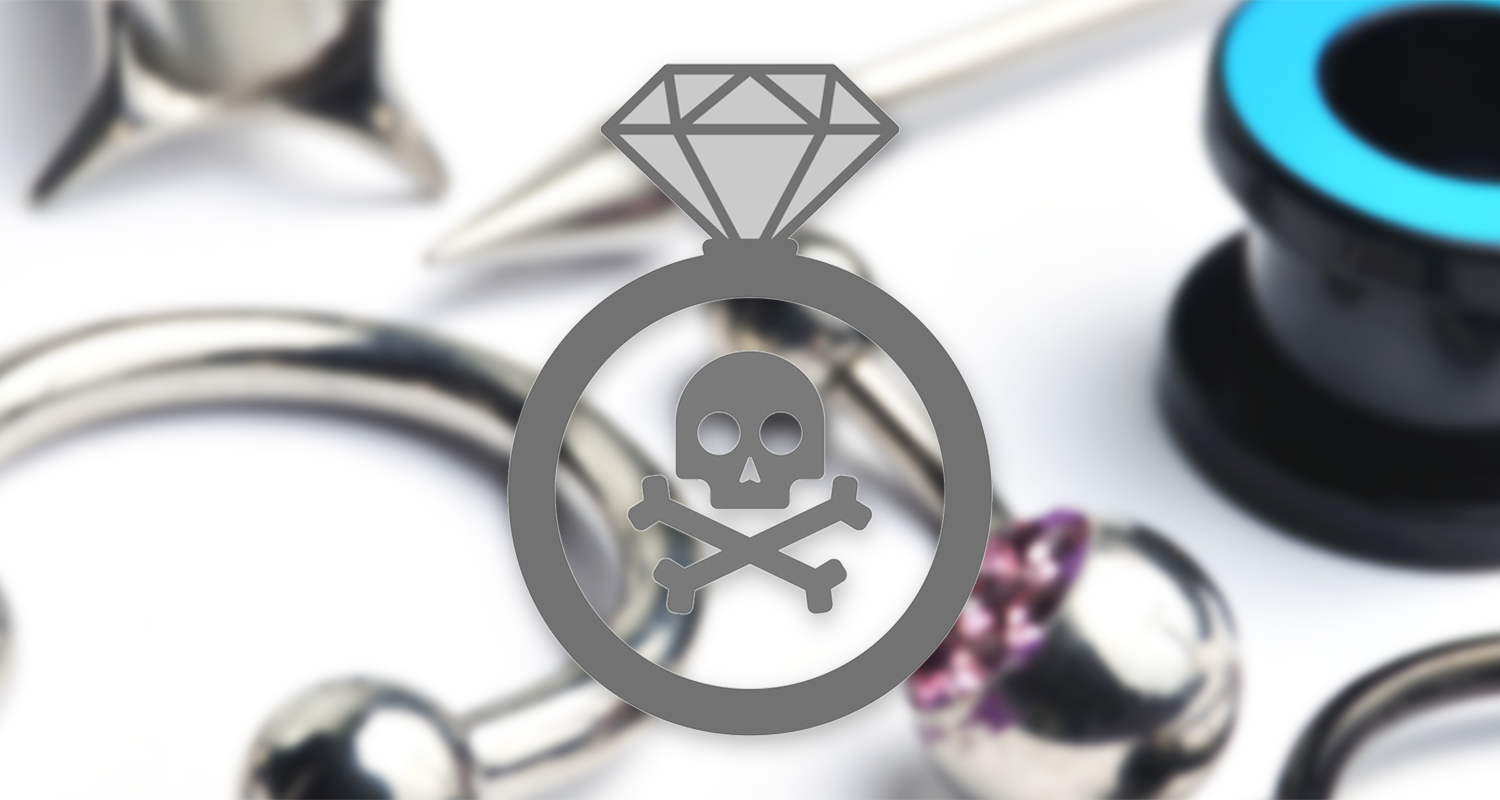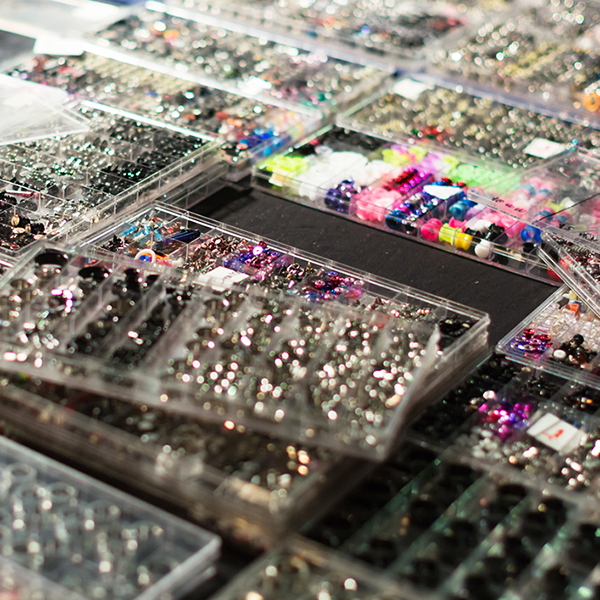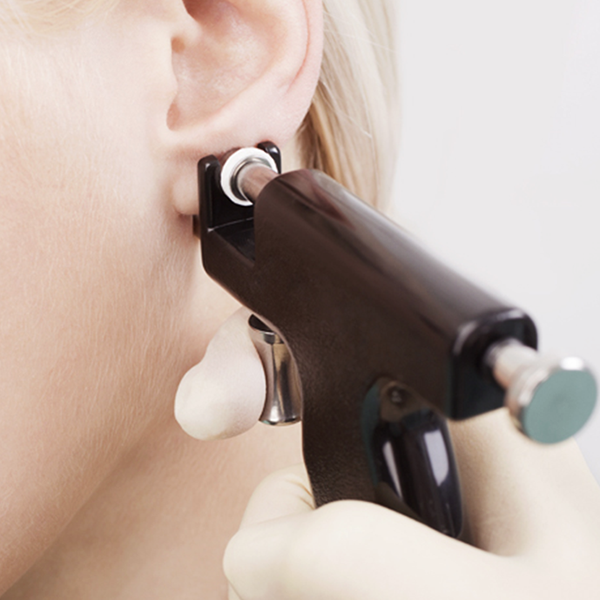Yes you heard correctly your BODY JEWELRY CAN POISON YOU!
Have you ever asked yourself what’s the composition of your jewelry? Or how, at first glance some jewelry can look so nice and affordable, can cause such irreparable damage? Who’s to blame for this?
Firstly, I’d like to make the distinction between fashion accessories, fashion jewelry and body piercing jewelry.
Fashion accessories are things that come in indirect contact with the skin or only in contact with the skin for a short period of time. This can be things like a belt buckle, a decorative accessory on our clothes, a piece on your handbag, etc. These generally shouldn’t be in direct contact with the skin for a prolonged period of time.
Next we have fashion jewelry which includes necklaces, watches, bracelets, rings, etc. These are pieces that come in direct contact with the skin and usually on a prolonged basis but not indefinitely because usually these objects are removed when we take a shower, go to bed, etc.
Finally we have our last category but certainly not the least, body piercing jewelry, which includes earrings, nose rings, etc. Not only are they in direct contact, but internally and for long periods of time. I’ll be focussing more on earrings because I am sure that a lot of you buy them! As for all other types of body piercings, I will be writing another article on the subject.
Why is it important to mention these different categories? Well this relates to the time that we are subject to various toxic elements.
Now are you ready to hear the truth? This may frighten you.
CAUTION- Fashion jewelry has already caused deaths!
Lead and cadmium are often used in the creation of jewelry and accessories in China, India and Korea and they are distributed worldwide by big named commercial chain stores, boutiques, discount stores, etc.
It’s all because of our current system. I’ll explain…
As Canadians, we consume a lot of electronics, some of which get recycled thereafter. Recycling centres then sell the materials to places like China.
China now has laws against electronic waste imports, so recycling companies sell their waste to part stores here as good pieces; who then sells these to part companies in China and from there they will be sold to recycling companies.
These recycling companies collect all the metal including lead and cadmium and sell this to companies that fabricate cheap fashion and accessory jewelry. Then the jewelry and accessories are returned here to be sold! Doesn’t that sound wonderful?
We already know that any form of lead can be extremely damaging for our health, like mercury, but do we really know to what extent?
How is lead toxic?
Each exposure increases the level of toxins in our body which accumulates during our entire lives. Exposure to lead can cause several health problems such as:
- Behavioral problems
- Learning difficulties
- Weakness in joints and muscles
- Anemia
- Organ failure
- Don’t forget death!
Lead is frequently used in the production of jewelry and accessories of mediocre quality including items made for children.
Children under the age of 6 are even more at risk because their bodies are in a period of fast development. They are also prone to put jewelry in their mouths so they are at even greater risk of poisoning. Lead poisoning is responsible for the death of a 4 year old in Minnesota who had swallowed a pendant that contained lead.
Here are some examples of jewelry and accessories that was found by the State of California that contains lead:
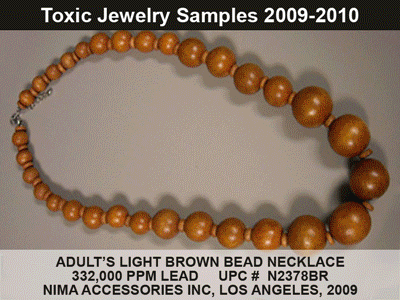
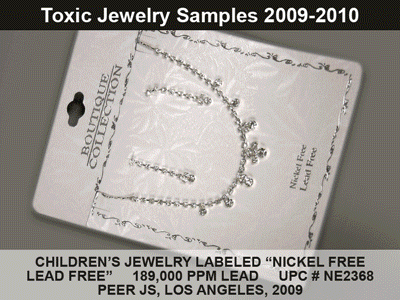
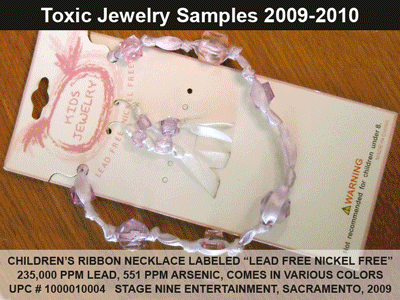

If the packaging indicated may contain lead, cadmium and or arsenic… would you buy it? It’d be a wonderful gift to offer someone wouldn’t it?
We will now talk about cadmium. Yes I know, I too have difficulty even just pronouncing the word, and it doesn’t sound all that dangerous.
Cadmium is a metal found in the same family and has similar chemical properties as zinc and mercury. It has been categorised by the International agency of Cancer research as being a carcinogenic substance. It makes up one of the six banned substances in the European Union. The State of California also has restrictions on this cancerous substance and has been pushing to get it banned altogether.
What is Cadmium even used for?
Cadmium is used in fashion jewelry as a coating to increase the shine. It also adds weight and mass. As an alloy, it increases the fluid characteristics. It also found in the soldering used in making the jewelry and accessories.
Prolonged exposure or ingestion of cadmium can cause damage to the kidneys, problems with loss of bone density, vomiting, diarrhea and also death once the levels are high enough in the body. Cadmium accumulates in our body during our whole lifetime and 30% of what is absorbed by our body stays stocked within our kidneys. Interesting no? I’ll talk a little bit about arsenic because it is still used today but on a much smaller scale.
Certain Japanese alloys used in jewelry making such as Koromi-do may contain some arsenic. Arsenic is a carcinogenic and is also associated with cardiac problems.
These metals are VERY DANGEROUS and should be avoided at all costs! With such high levels of toxicity, any exposure is dangerous.
It is worth noting that the gilding of synthetic jewels used in jewelry, even high quality ones, can contain lead. The more jewels on a piece equals more exposure to toxins.
If you still haven’t understood the importance of ridding yourself of these metals from your closet then ask yourself this question: Are you prepared to be responsible for the death of your 4 year old child?
Let us continue and expand on the subject of different metals used in the jewelry making process. Some are more harmless than others.
Oh that famous nickel
Nickel that is found in some alloys is generally used as a whitening agent. As an example, certain pieces of money that contain copper will use nickel as well to give it a more silver appearance. It is widely used in the production of stainless steel and sometimes even mixed in with white gold or silver. Why is nickel used in white gold? It is mostly used because it is much less expensive than palladium.
An increase in the number of nickel allergies has caused Europe and Japan to ban most alloys which contain nickel such as gold-nickel and silver-nickel but it is still frequently used here in North America.
About 10% of the population is allergic to nickel. More we are exposed to nickel the more we have a chance to develop an allergy and unfortunately once we become allergic we will be for the rest of our lives.
The European Union has imposed a limit to the amount of nickel allowed in a finished product. There cannot be more than 0.2 milligrams per cm2 per body jewelry that has direct internal contact with the skin, such as earrings and no more than 0.5 milligrams per cm2 for all other fashion jewelry that has contact with the skin, such as watches and necklaces.
This may all sound very complicated but here’s a little tip for you. When you go and buy a piece of jewelry made in stainless steel, ask the retailer a copy of the certificate of analysis of the composition of the stainless steel. If the certificate is available, it will tell you the amount of nickel found in the product. These certificates are generally easy to read and most retailers should have a certificate like this.
If the certificate is not available it almost certainly means that the product does not conform to proper standards. Your jewelry can then make you allergic to nickel much faster. Would you like to have an acute reaction every time you touch money or your cooking pots? That wouldn’t be very fun now would it?
Alright, well how can you tell if you’re allergic to nickel? I wouldn’t worry about it, you will know if you’re allergic or not. Symptoms often appear as redness, inflammation or itchiness around 12 to 48 hours after contact with the product. In rare cases, reactions can become more intense and would require you to visit a doctor.
Titanium is another metal that we are seeing more and more in jewelry. It is a lot lighter than stainless steel with an incredibly high durability. It does not cause allergies to nickel compared to stainless steel. It stays relatively inert when in contact with the skin.
Gold and silver are metals that don’t cause harm to the human body. Most people who have reactions to silver are actually having reactions to the metals mixed with the silver such as nickel used here in North America. The skin in certain cases can even turn black where the person wears the silver.
Silver is also used for its antibacterial properties. We will often see it on certain bandages or even in some creams. Its toxicity for the human body is practically zero.
A lot of other metals such as copper, iron, brass, zinc, etc. are used in the making of jewelry and accessories but to name them all would be a tedious undertaking and not of importance. What’s important is to be informed!
I’d like to point out that our bodies actually do need certain natural metals. Many multi-vitamins have them such as iron and copper.
It’s a thin line between having the right amount and having too much. It has even been proven that most multi vitamins even contain double the recommended dose.
A deficit of copper can cause problems with your haemoglobins while a deficit of iron can cause problems with enzyme production.
While on the other hand too much can be toxic or even fatal. An excess consumption of these metals has been linked to problems related to the brain including Alzheimer’s.
Everything we touch, eat, wear, breath contains substances that sometimes can be toxic, non-toxic, necessary, and not necessary but must all be taken into consideration. Even makeup contains metals such as in the pigments and sometimes may even contain mercury.
I cannot say this enough how important it is to keep yourself informed!
We as consumers must be aware of what we buy. People have been moving more towards quantity over quality. Everyone wants more, but at what cost?
Is it the manufacturers fault? All they really have been doing is responding to consumer demands, which is more for less.
Or is it the fault of the importers, distributers and retailers who have been selling without the health of the population in mind.
Or is it our fault, the consumers who are asking for such a product?
Is it really up to the legislative government to create laws to protect us?
In this world of demand, creation, distribution and encouragement of industries of quick, easy and cheap have we forgotten the importance of taking care of our bodies and those we hold dear?

